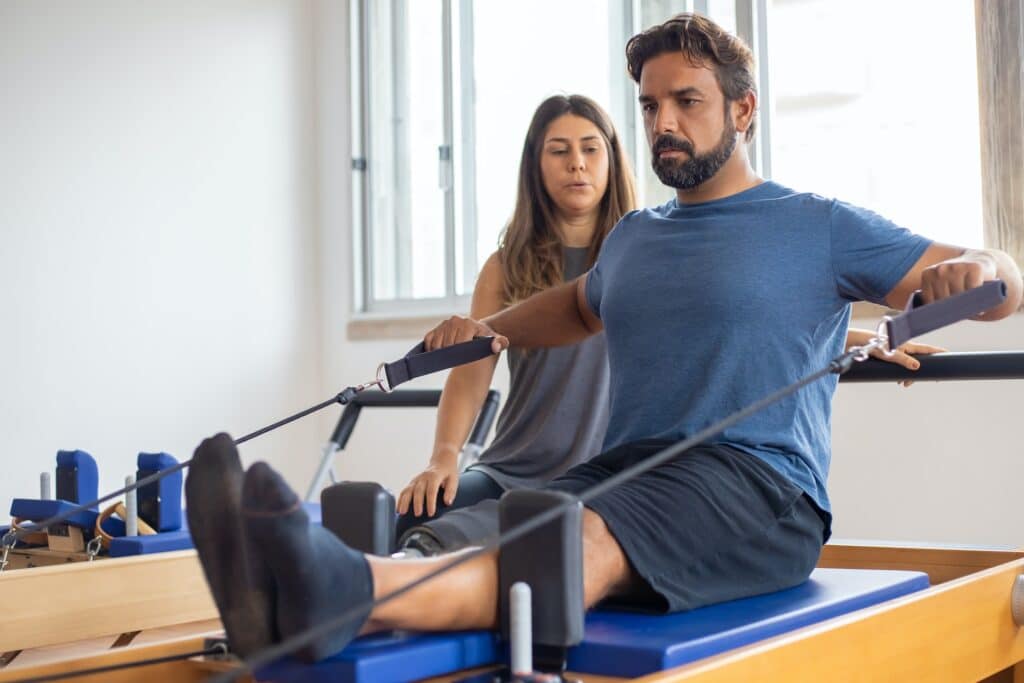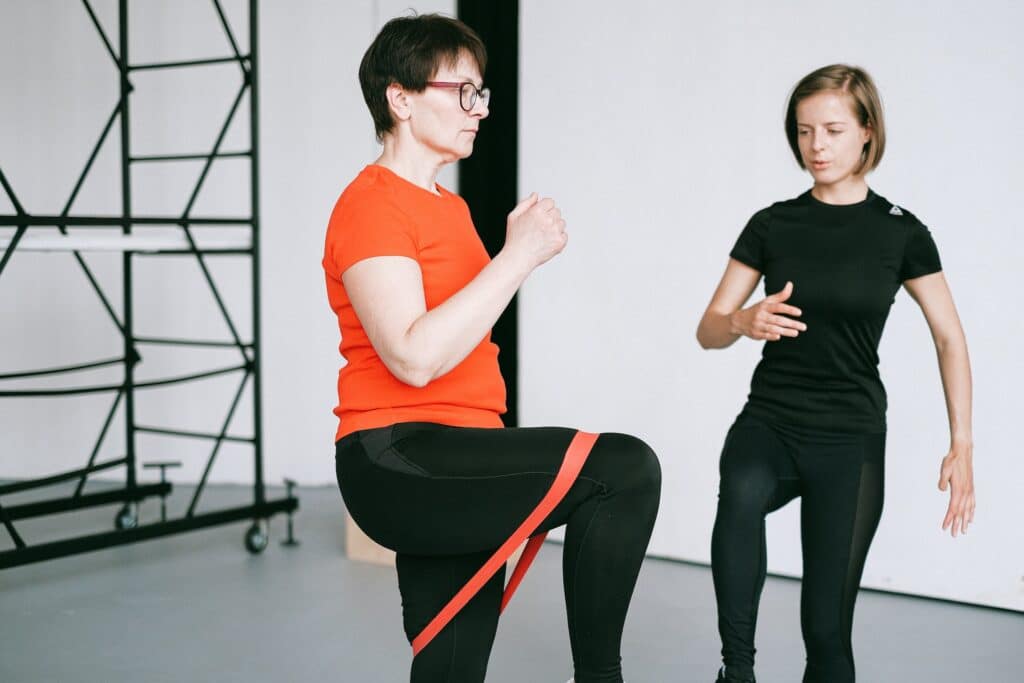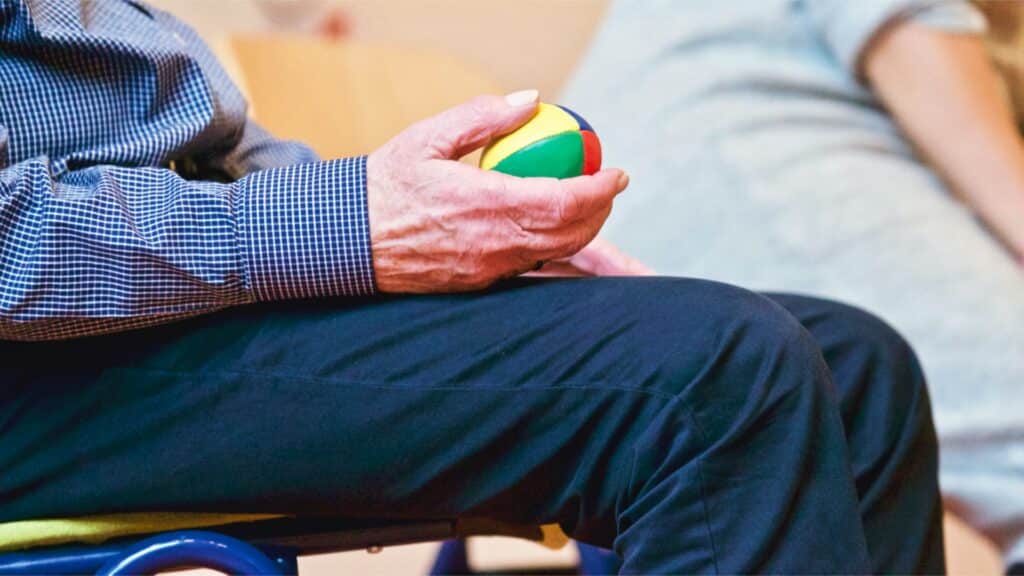Pain, rehabilitation and health are the main factors that physical therapy focuses on when providing tailored treatment plans for patients. Its wide range of uses make it an important aspect for many individuals in their journeys toward regaining function and overcoming discomfort. This overview will shed light on this type of healthcare, exploring its various specialized techniques as well as what makes it such a vital service.
Starting our journey through the physical therapy universe reveals powerful methods which treat neurological conditions along with sports injuries alike, making its impact undeniable!
Knowing how to choose the right provider is key for obtaining successful results. We’ll show you all there is about finding one who suits your needs best upon finishing up here.
As you go deeper into understanding just how beneficial physical therapy can be, remember why so many people around have come to find relief from long-term issues: because nobody should live life hindered by pain or lack of mobility if they don’t have too!
Short Summary
- Physical therapy is a healthcare discipline focused on improving mobility, alleviating pain and enhancing quality of life.
- Physical therapists provide individualized treatment plans to address musculoskeletal pain & dysfunction using active/passive exercise, manual therapy & cold/heat therapies.
- Careful research and preparation are essential when choosing the best physical therapist for your needs. Home exercises programs also play an important role in recovery.
Understanding Physical Therapy

Physical therapists are dedicated to maintaining the most recent findings in their industry so that patients receive only up-to-date treatments. This form of healthcare employs interventions like manual therapy and exercises to fight loss of mobility, decrease discomfort, and improve an individual’s quality of life affected by illnesses or accidents. The practice is wide reaching. Physical therapists don’t just work at rehabilitation facilities, but also participate in research centers, nursing homes and hospitals too. With a variety of specialties spanning from musculoskeletal orthopedics all the way through sports medicine and neurology – it can be tailored with flexibility for different scenarios effectively each time.
The Role of Physical Therapists
Physical therapists are qualified healthcare professionals who have vital roles in treating and healing patients with various health issues. They must possess a physical therapy degree as well as continuing education courses to maintain their knowledge base, so they can best address patient requirements accordingly. Primarily, it is the responsibility of these experts to identify each individual’s specific needs, form an appropriate treatment plan that also includes hands-on methods dedicated to improving the patient’s ability for motion and overall wellbeing.
Healthcare providers such as PTs collaborate very closely with other medical staff including doctors and nurses so that a comprehensive care program could be made which takes into account all factors relevant to help those people suffering from pain due to chronic illness or injury recovery after operations etc., Physical Therapists utilize special exercises combined with manual techniques meant to direct them on the route leading back to health.
Common Conditions Treated
Physical therapists use exercises, manual therapy and heat/cold treatment to help patients who are experiencing orthopedic issues, sports-related injuries or neurological disorders. They are. Assist people with chronic medical conditions, balance problems, and other mobility impairments. Common cases they face include back pain, osteoarthritis, rheumatoid arthritis among others. These therapies can reduce discomfort and improve function ultimately preventing more harm from occurring while also improving the patient’s quality of life.
Techniques and Modalities in Physical Therapy

Physical therapy provides a plethora of modalities which help in addressing and treating underlying causes of pain. In order to create the best care approach for each individual, these treatments are designed specifically to fit their needs. Common practices used by physical therapists include active and passive exercises, manual manipulation on the body’s soft tissues/joints as well as heat/cold therapies– all aimed at achieving improved strength, mobility, reduction in inflammation and ultimately healing from any dysfunction or discomfort felt by patients.
Active exercises involve direct input from the patient- engaging muscles & joints through controlled movements while passive requires assistance (often times extending range) given externally via therapist’s involvement. Both enabling progress towards better health outcomes when exercised correctly with respect to one’s specific condition(s). Manual therapy consists of hands-on techniques such as knitting that directly target areas causing problems along with providing relief upon completion– whether it be injury recovery related or muscle soreness caused due to intense exercise postures. Lastly, but certainly not least, is cold/heat treatment effective at reducing swelling while improving circulation and thus having general beneficial effects leading up to repairments within targeted zones located anywhere throughout our bodies!
Active and Passive Exercises
Physical therapy treatment plans are largely based on both active and passive exercises. In an active exercise, the patient utilizes their muscles and joints to complete a wide range of movements that can vary in difficulty from basic stretches up through more complex activities. This helps build strength, flexibility, as well as improve mobility depending on what is required by each individual patient’s needs or capabilities. Passive exercises are passive exercises. Involve the therapist guiding movement of the body for increasing range of motion before progressing into movement. Activities-based techniques during treatments. Such actions allow blocked joints to move with greater ease, which allows even higher intensity physical therapies to take place later down the line within any given plan designed just for them.
Manual Therapy
Physical therapists can utilize manual therapy to treat various musculoskeletal pains and dysfunctions. This type of physical treatment involves specialized techniques such as mobilization, manipulation, oscillatory methods, high velocity low amplitude thrusts, sustained stretching and muscle energy approaches. Through the combination of all these elements in their treatments, physicians are able to restore movement without pain for patients who have experienced dysfunction.
Certain physical simulations like electrical currents may be employed by some therapists to assist them even more. When delivering effective solutions that identify underlying causes leading up to an individual’s difficulties with mobility or lack thereof. Thereby allowing specialists offering therapeutic services enabling long-term relief while improving how a patient functions overall.
Cold and Heat Therapy
Physical therapists can make use of both cold and heat therapy in treatment plans to address a wide range of issues, from pain relief to healing. Cold therapy or cryotherapy has been found beneficial for numbing acute injuries as well as reducing swelling and inflammation. Conversely, thermotherapy is indicated when it comes to relieving stiffness and muscle spasms through increased circulation, which relaxes the muscles simultaneously. The advantages that these techniques offer make them an indispensable part of any physical therapist’s practice. Allowing patients access not only to pain relief but long-term results too with repeated usage over time.
Specialized Areas of Physical Therapy
Physical therapists can provide highly specialized care to specific populations and conditions, such as neurological physical therapy, sports physical therapy, and women’s health. These individualized approaches help improve treatment outcomes for patients while maintaining quality of life. To gain a better understanding of these specializations within the practice of physical therapy, we will look at the following. In their unique techniques and areas treated.
Whether it is yourself or someone close who needs specialist attention with any sort of issue from neurology to an injury related to sport, being aware about the different treatments available through various therapies equips you when making decisions around healthcare options. Physical therapists focus primarily on how best they can serve the patient’s requirements in order maximize results so everyone feels at their absolute best!
Neurological Physical Therapy
Neurological physical therapy is a specialized field focused on providing treatments for neurological disorders such as brain injury, spinal cord injury and stroke. By creating personalized treatment plans tailored to the individual needs of each patient, these therapists use exercises and techniques which are meant to improve mobility, coordination skills and balance that may be compromised due to different types of injuries or illnesses like Alzheimer’s disease, Multiple Sclerosis (MS), ALS Charcot-Marie Tooth Disease (CMT). Parkinson’s disease and chronic back pain in order to have their patients regain function with an aim towards improving overall quality life.
Sports Physical Therapy

Sports physical therapy is a form of medical assistance dedicated to treating athletes and preventing sports-related injuries. Physical therapists that specialize in this field provide injury prevention, performance improvement and recovery treatments for individuals who are involved with recreational or professional sports. The services may involve passive exercises such as heat therapy alongside active treatment like manual techniques followed by cold applications after the workout session has ended. Therapists help these people ensure their strength, flexibility level and endurance increase so they can maximize results when performing during events at any capacity.
Women’s Health Physical Therapy
Physical therapists who specialize in women’s health are able to assess and treat issues experienced by female patients throughout their lifespans. These conditions may include those related to pregnancy, postpartum, pelvic floor dysfunction as well as others exclusive to women’s experiences.
Studies indicate that manual physical therapy is an effective solution when it comes to addressing various health difficulties among females, such as pain during pregnancy or treatment of pelvic floor dysfunction (PFD). Research shows evidence suggesting conception rate increases from undergoing this type of therapeutic approach amongst infertility struggles.
Through offering specialized attention to these particular medical matters, the care provided by physical therapist professionals can improve the overall wellness level plus quality life experience of a patient substantially.
How to Choose the Best Physical Therapy Provider
When selecting a physical therapist, it is essential to check their certification and licensure through the state licensing board or APTA. One should also consider if they accept insurance as well as specialty treatment required. Researching potential providers and reading reviews from previous patients are essential for ensuring the best care possible. Location of provider and experience level plays an important role in choosing one’s medical professional, so it may be wise to take time evaluating your options before committing oneself to any particular option. By putting in effort when making such crucial decisions, you can rest assured that you will receive excellent service tailored specifically based on individual requirements.
The American Physical Therapy Association (APTA)
The American Physical Therapy Association (APTA) is a professional organization dedicated to providing services and support for over 100,000 physical therapists across the US. This includes promoting excellence in practitioner practice, research and education, as well as raising awareness of therapy’s important place in healthcare systems nationwide.
To offer help with training opportunities designed to ensure practitioners stay up-to-date on best practices, APTA also strives towards elevating standards of care within this profession, all ultimately resulting in better outcomes for patients receiving therapies from qualified therapist professionals.
Preparing for Your First Physical Therapy Session
Prior to attending your initial physical therapy session, it is important that you provide information concerning your medical past, current state of health and objectives for the treatment. This data will help your physical therapist create an individualized care plan customized specifically to fulfill these needs.
Come on time or even a bit earlier than planned for the appointment while wearing garments which allow free movement. Bring any related documents such as insurance details or existing medical records relevant to this particular consultation with the physiotherapist.
The Importance of Home Exercise Programs

Patients can take advantage of home exercise programs as part of their physical therapy journey, thereby enabling them to extend the benefits and progress achieved during treatments. By regularly practicing the techniques taught in sessions with a committed approach towards rehabilitation, individuals will be able to maintain an improved level of physical function for better overall wellbeing. Making time for exercises at home offers patients more control over their recovery process so that they can receive maximum benefit from it beyond just attending appointments. As such, dedicating oneself to this kind of program is key in order to allow long-term results when it comes to improving one’s health status as well as quality of life.
Summary
This thorough guide has given us insight into the wide world of physical therapy, enlightening readers about different strategies used in treatment and unique specialties like neurological PT. As well as passive and active exercises that can make a big difference to someone’s health condition.
As you start your own journey with this form of care, keep in mind it is not only experienced professionals providing effective treatments but also yourself taking an active role on recovery progress, completing prescribed exercise programs at home will help strengthen function eventually leading to improved quality of life. Working side by side with a qualified therapist on the suitable plan for individual circumstances could be a key factor to successful healing from any disability or injury!
Frequently Asked Questions
What is physical therapy usually for?
Physical therapists strive to use therapy and manual techniques in order to help patients with medical conditions or injuries reduce pain, increase balance, boost range of motion, enhance strength, improve endurance and improve their overall mobility.
What are the 3 types of physical therapy?
Physical therapy is a beneficial approach for the treatment of injuries and other physical conditions. Manual therapy, therapeutic exercises, and training with assistive devices are three types of therapy used to help patients improve balance, strength and mobility in order to attain their desired goals functionally. With these treatments, they can meet any challenges presented by specific medical issues or situations.
How long does physical therapy take for lower back pain?
When it comes to dealing with lower back pain, physical therapy is often recommended and usually requires at least four weeks of commitment for long-term success. The exact timeline depends on the level and cause of your discomfort, so speak to a medical professional who can create an individualized plan suited just for you. Your doctor may also give advice regarding lifestyle modifications that could be beneficial in managing your chronic pain over time.
Does physical therapy work for sciatica?
Physical therapy has been proven to be an efficient treatment for those with sciatica. Exercise and stretches can help strengthen the back, improve posture, ease pressure on the affected nerve, all under professional guidance from a doctor or healthcare provider. Physical therapy is essential in providing relief of symptoms associated with this condition.
What is a physical therapist?
Physical therapists are an essential component of healthcare and they specialize in helping people become more mobile while alleviating pain. Through treatments such as exercises, massage, stretches and other manual therapies, physical therapists can help patients regain their independence by improving strength without the need for surgery or prescription medications. As well as providing advice on proper body mechanics and posture modification to manage discomfort, these professionals also share lifestyle tips with those under their care to assist them further.
